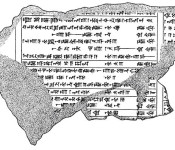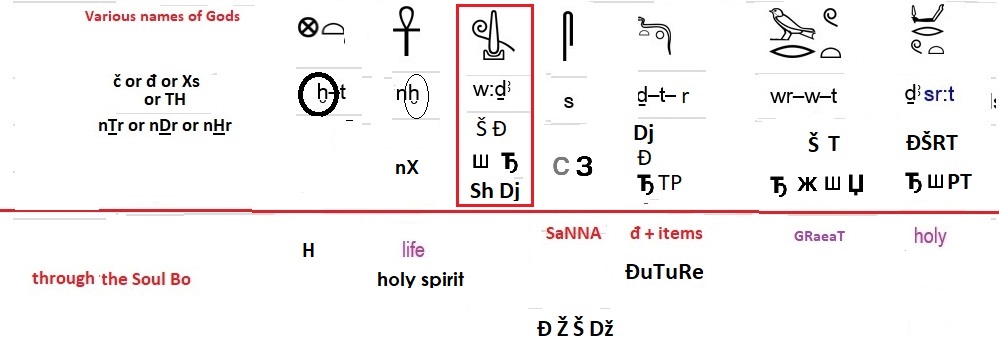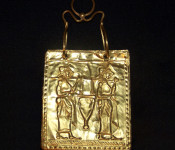Learning from Van Gogh & Hokusai about 19th Century Art Great Wave
Thursday 30 September 2021 at 9:19 pm
19th Century art & Search for Indefinite, Infinite Impression consciousness
Presence or Absence of divine Learning from Van Gogh & Hokusai by Nataša Pantović
The late 1800s was the time of Impressionism as a radical art movement , centered around Parisian painters, the wave that rebelled against classical subject and gave respect to Mother Nature.
Travelling to their thought-form, Vincent van Gogh to the artist friend Emile:
“But now look, ... you surely can't seriously imagine a confinement like that, in the middle of the road, with the mother starting to pray instead of suckling her child? Those bloated frogs of priests on their knees as though they're having an epileptic fit are also part of it, God alone knows how and why!
No, I can't call that sound, for if I am at all capable of spiritual ecstasy, then I feel exalted in the face of truth, of what is possible, which means I bow down before the study - one that had enough power in it to make a Millet tremble - of peasants carrying a calf born in the fields back home to the farm.
That, my friend, is what people everywhere, from France to America, have felt. And having performed a feat like that, can you really contemplate reverting to medieval tapestries? Can that really be what you mean to do? No! You can do better than that, and know that you must look for what is possible, logical and true.”
Letter from Vincent van Gogh to Emile Bernard, Saint-Rémy, 1889
“Now to enlighten you, my dear M. Van Gogh, ... I am searching for and at the same time expressing a general state of mind rather than a unique thought, to have someone else's eye experience an indefinite, infinite impression. To suggest a suffering does not indicate what kind of suffering: purity in general and not what kind of purity. Literature is one (painting also). Consequently, suggested and not explained thought.”
Letter from Paul Gauguin to Theo van Gogh. At this time, Vincent was 36 year old.
The two striking waves in Blue: 2 Great Waves - Hokusai 1883 & Van Gogh 1989
First seen outside Japan in the 1880s, Van Gogh's brother was one of the first Europeans to collect Japanese prints and has admired Japanese art.
The Starry Night Vincent Van Gogh, 1889 & Japanese print Hokusai Great Wave 1833
Read more
Learnings from Plato's Republic
Wednesday 25 August 2021 at 7:35 pm
History repeats itself and Plato about Arts
History repeats itself. And people forget about history. There is no easy fix. It is easy to think that wars are in the past, that society has changed and it will never happen again. As memory fades, Gaia’s events from the past can become events of the present. The more things change, the more they stay the same. What we are seeing is that ‘digital’ acts as a magnifier, and accelerator. The problem is still the same. The isolation of East and West, North and South. Wealth inequality is a social and civic conversations that is not new but that has been catalysed through digital media.
Manuscript from the 300 AC, containing fragments of Plato's Republic.
Plato in the Republic rejects any form of illusionism in art. He calls it mimesis or ‘imitation’. This has also created a question what is the Greek word “mimesis”? And why does this matter?
What we have not full knowledge of, we cannot reproduce. Presumably this is the reason why all the monotheistic religions (Protestant Christianity, Islam, Judaism) had an explicit problem with art and artists trying to imitate the knowledge of god, its image, his son, soul, Universe, etc. The imitation occurs in many instances, when an artist uses a portrait of a dead person to recreate his-own interpretation of the person. But Plato goes beyond it.
Read more
Learnings from Cyrillic Alphabet and DNA Analysis
Tuesday 24 August 2021 at 10:43 am
Etruscans origins & Slavs
Learning from Cyrillic Alphabet & DNA Analysis, #education #consciousness
History is a fascinating subject. Researching god or consciousness even more so! We read amazing accounts about ancient wisdom traditions such as Platonism, Orphism, Orthodox Christianity, and in China Taoism, and neo-Confucianism.
The Big Dipper Ancient Symbol Sky 6 Cycles
The insights from these traditions intersect with recent findings in metaphysics or biology. What brings the two into resonance is their mutual commitment to speak of the matter as alive. The four elements expressed through trinity that are defined by entangled triangle of relationships reflected in our language development.
Another visit to Serbia, this summer, and I was back researching the same scientific question, same puzzle that has certainly no answers yet it is an interesting exploration.
Were Slavs in Balkan as early as 431 BC?
Read more
Unlocking the secret of Egypt's hieroglyphs
Wednesday 28 April 2021 at 1:31 pm
The Ancient Egyptian Rosetta Stone
art and Mysticism of Ancient Egyptian gods and consciousness explorations
You have all heard of the conquest of Alexander the Great in 332 BC, when Ionic Greek (Homer-ian) was the language of the governing classes in Egypt. The Greek ruler, Ptolemy V in 200 BC has commissioned the Rosetta stone, to state publicly that he is the rightful pharaoh of Egypt.
Excavated during the Napoleon conquest of Egypt by French archaeologists, the scholars who had accompanied the French army to Egypt in 1799 AC. It found its way to England, in an exchange of Governments from French to British after the French surrender of Egypt in 1801, and is now in the British Museum... The Rosetta stone is written in three writing scripts: hieroglyphic, demotic, and Greek and it is a block of black granite 115 cm high and 70 cm wide.
Ancient Egyptian hieroglyphics for God, Ancient Rosetta Stone Research Papers
Without the Rosetta stone, we would not have been able to decipher the huge amount of writings, scripts, drawings, temples’ texts left behind by. The Rosetta stone is in two languages: Egyptian and early Ancient Greek. The writing on the Stone is an official message, a decree, about the king Ptolemy V (204 – 181 BC). The decree was copied on to large stone slabs called stelae, which were put in every temple in Egypt. It says that the priests of a temple in Memphis (in Egypt) supports the king.
This ingénues art-work was carved in three writing systems, hieroglyphic, demotic, and the Greek alphabet and this makes the Rosetta stone one of the most important archaeological discoveries in human history.
The last sentence of the Greek text says, “Written in sacred and native and Greek characters.” Scholars identified the “sacred” to the hieroglyphic system, while the “native” referred to the demotic script of the Egyptians.
Read more
Ancient Thrace and Orphism in Southeast Europe, Romania, Serbia, Macedonia, Greece, Bulgaria
Sunday 04 April 2021 at 1:36 pm
The oldest book in the World art and symbols of Golden Etruscan Orphic Book from Bulgaria
An ancient book comprising of six pages of 24 karat gold (measuring 5 x 4.5 centimetres) bound together by gold rings was donated to the Museum by an anonymous 87 year old Bulgarian man from Macedonia who had discovered the treasure in a tomb unearthed 60 years in southwestern Bulgaria. According to Elka Penkova, Head of the museum's archaeology department, the golden book is the oldest complete book in the world, dating to 600 BC.
The Golden Book is dedicated to the Ancient Greek God of Music Orpheus
Etruscan Gold book Thracian prayer 600 BC Bulgaria
This is a funeral book made for an aristocrat of the Orpheus cult.
The most popular cults were the Dionysian mysteries, which came to Greece from Thrace, along with the cult of Orpheus and the Orphic mysteries.
Perperikon in southern Bulgaria is a real city-temple, with the stone altars, dedicated to the God of wine and sexual ecstasy known by the Greeks as Dionysus, or Bacchus by the Romans. Orpheus, the Thracian’s musician god, according to legend was a disciple of Dionysus, but had argued against practices of orgies in the name of Apollo, the god of reason. He was murder by the maenads, the female followers of Dionysus. Orpheus death was considered a sacrifice to redeem mankind for its sins.
Orpheus leading Eurydice from the Underworld. Jean Baptiste Camille Corot 1796-1875
Some archaeologists believe that Orpheus could have been a real person who resided in the Rhodope Mountains, a Dionysian priest, an initiate of Egyptian mysteries. His cult proclaimed asceticism, was against sacrifice, and taught the transmigration of souls. His followers, including Pythagoras, Plato, Aristotle and Alexander speak of the soul’s capacity to experience the divine. The initiated students had learned to break free, resurrect and experience happiness in the afterlife.
Read more






